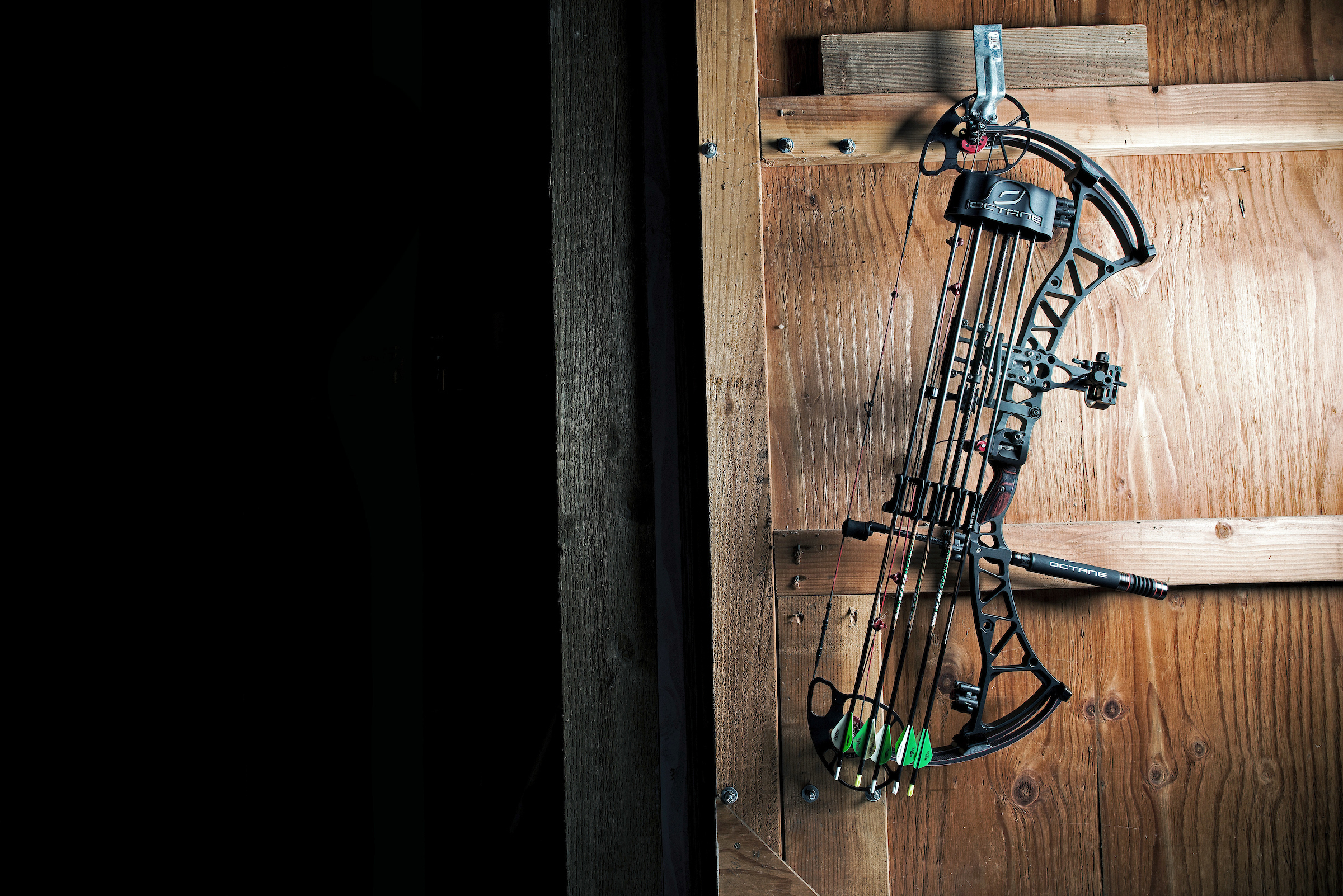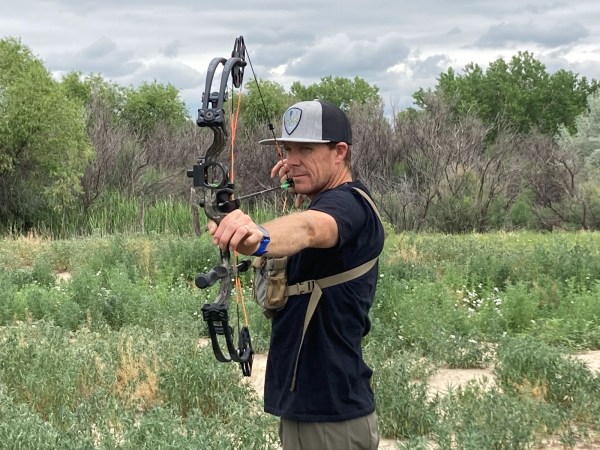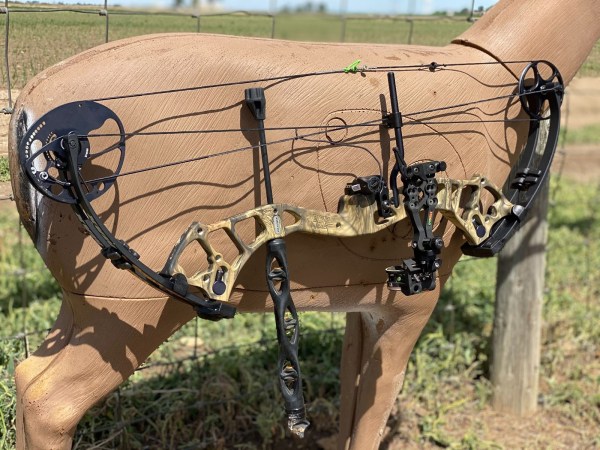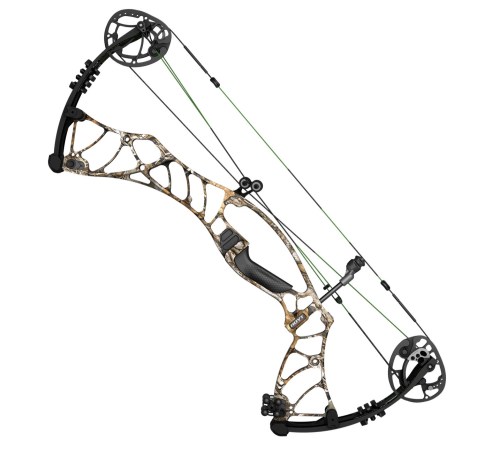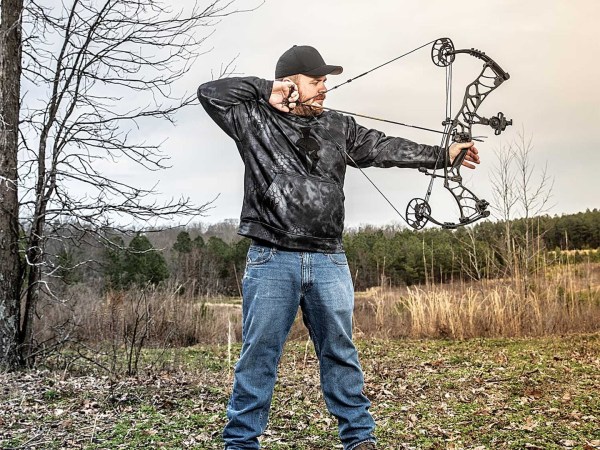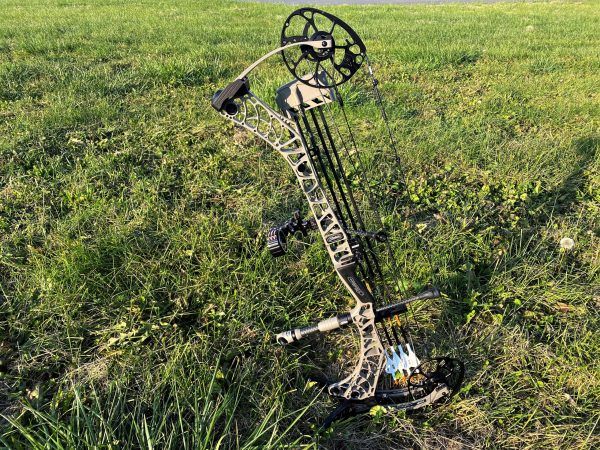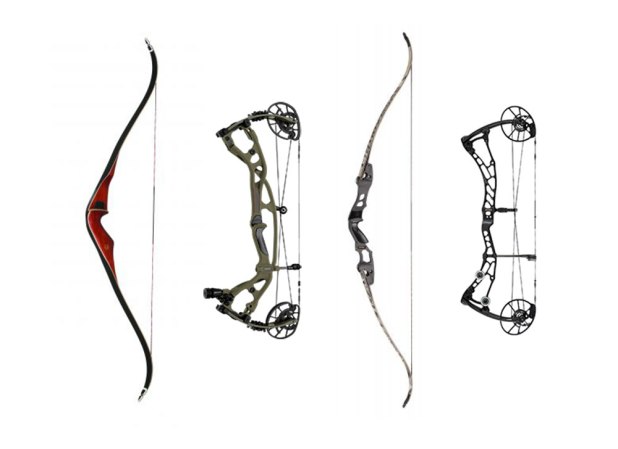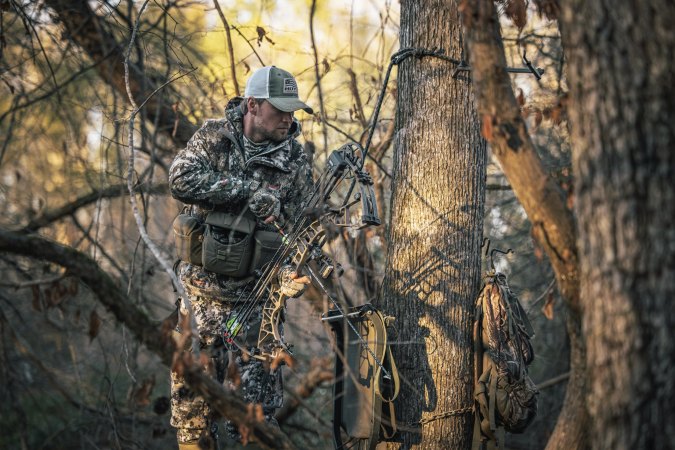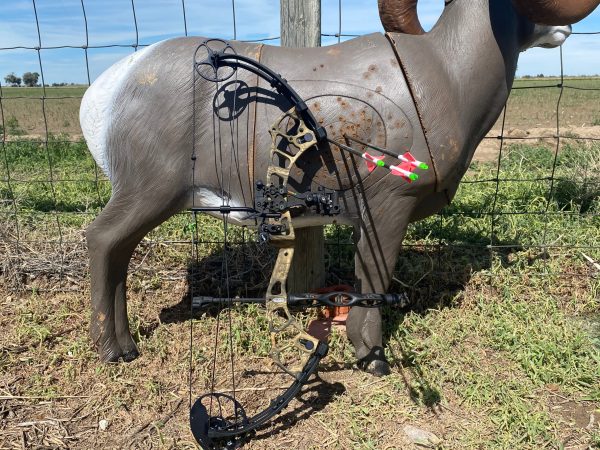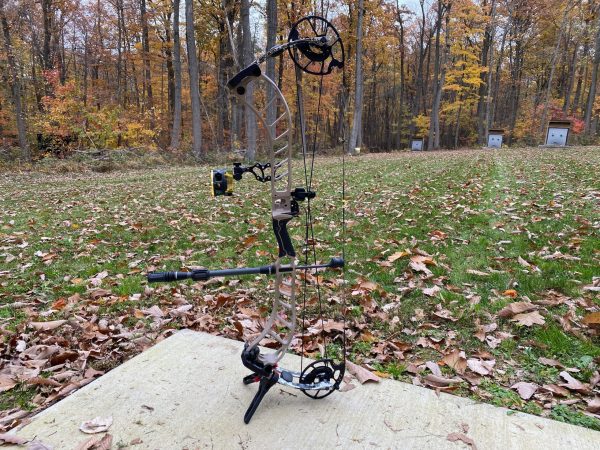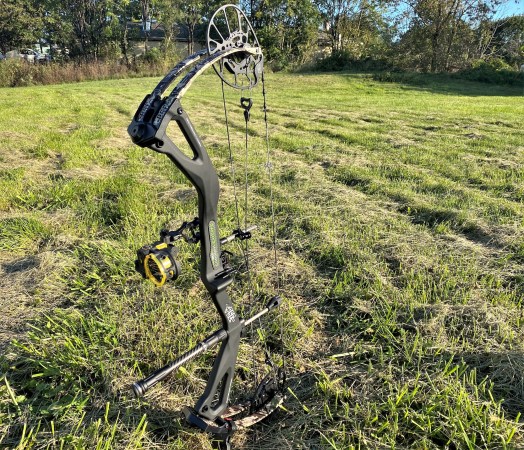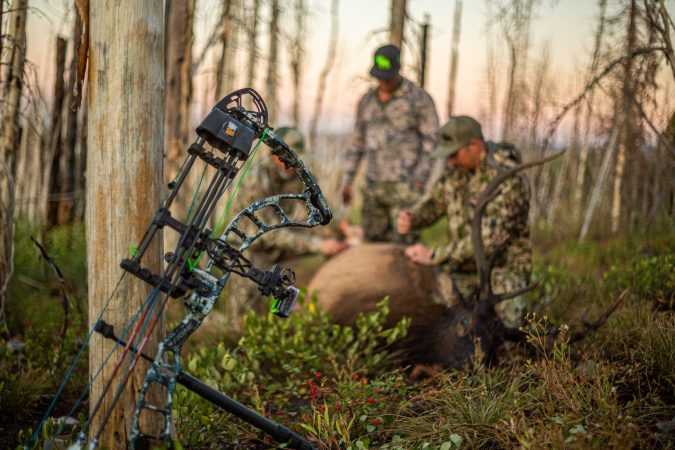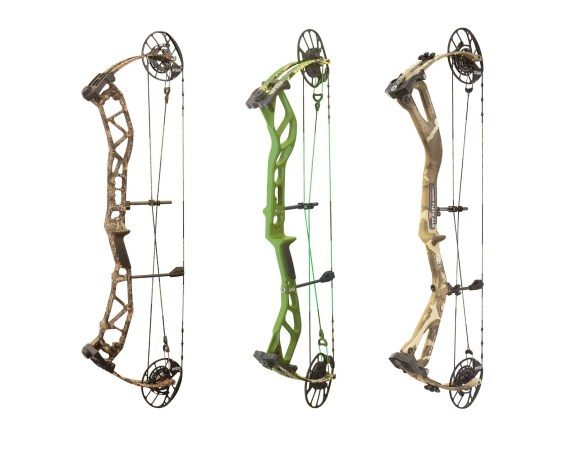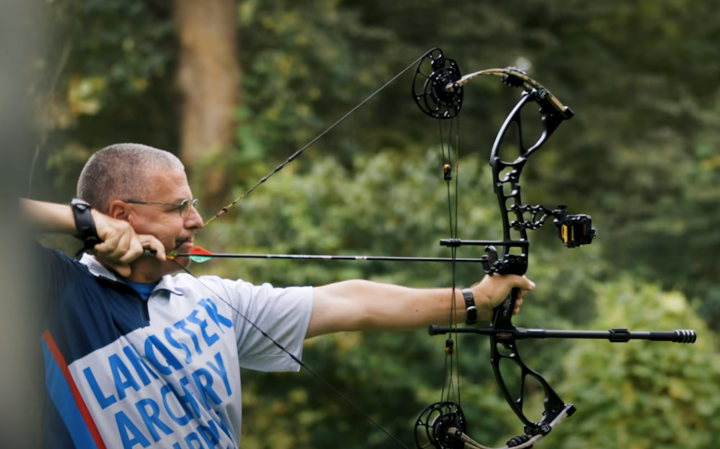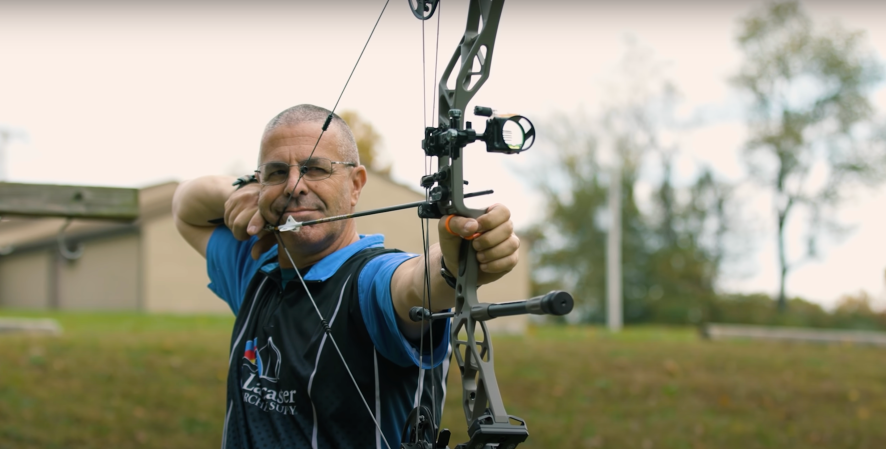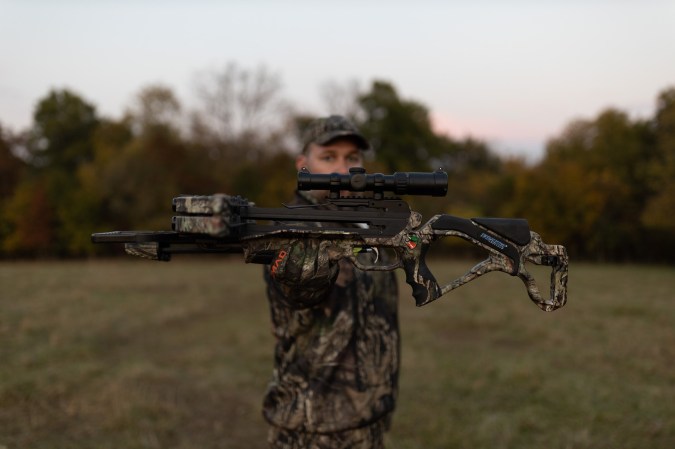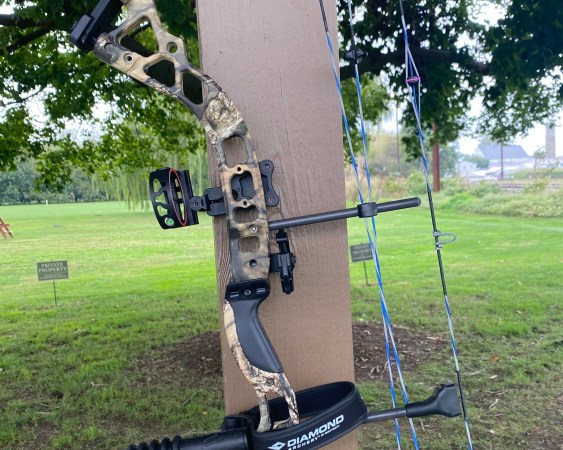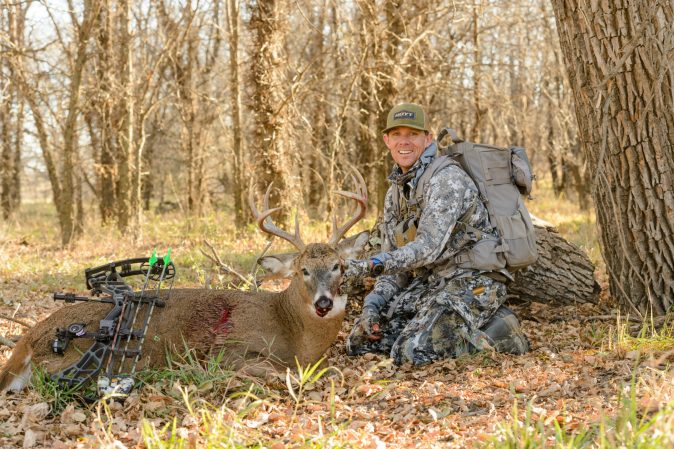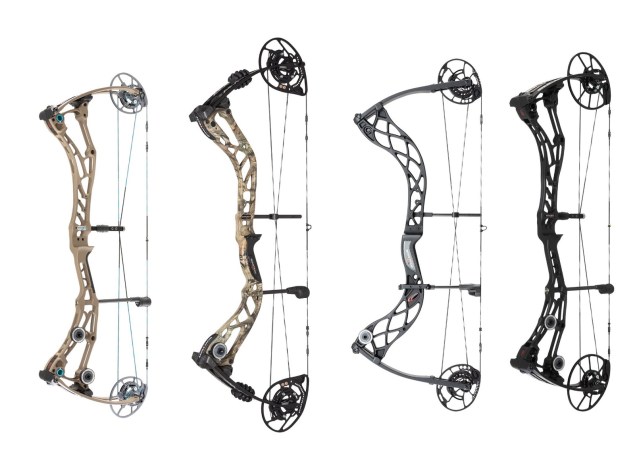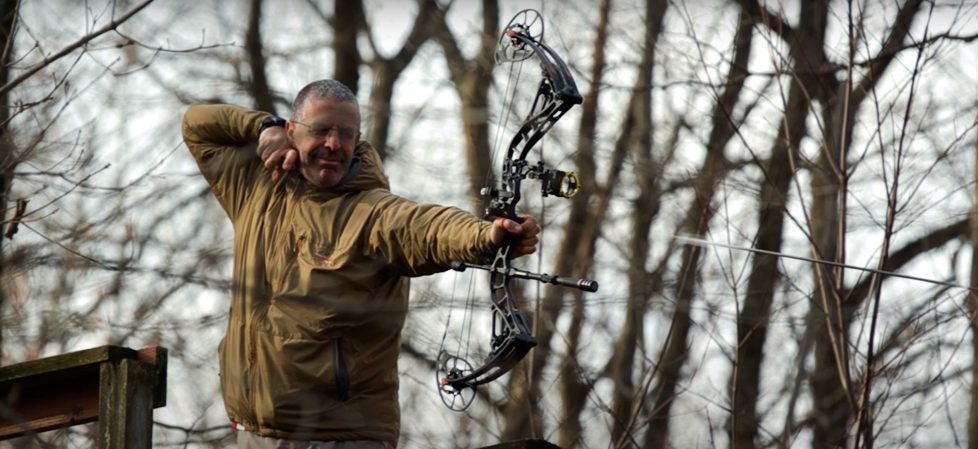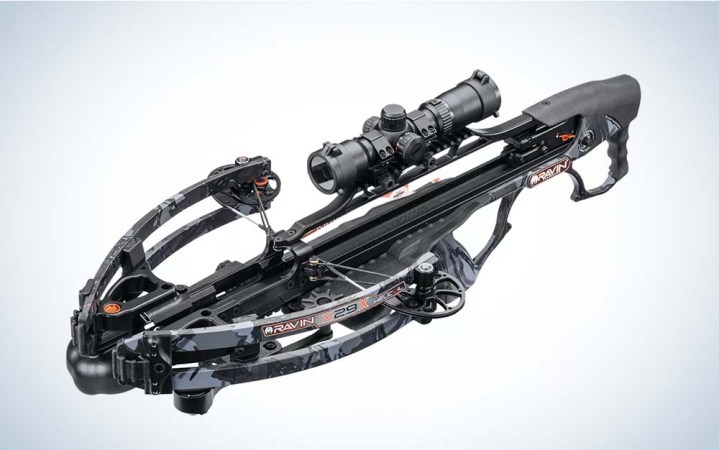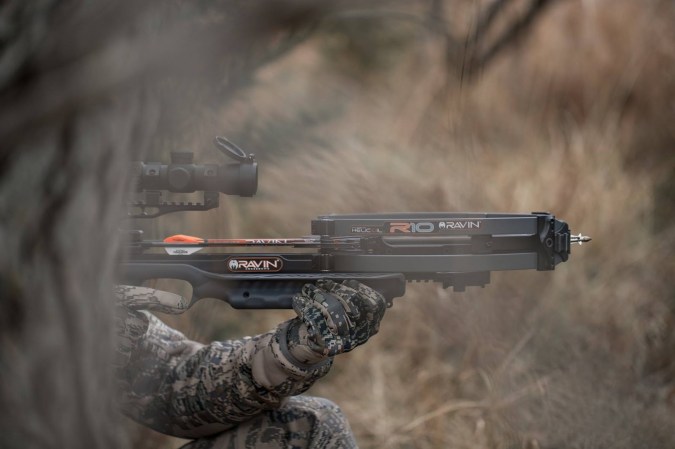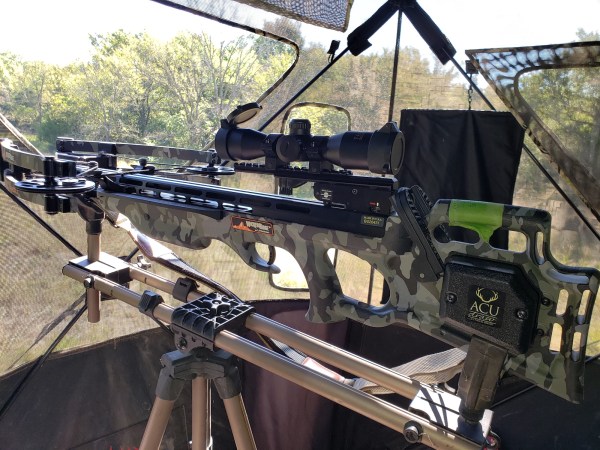We may earn revenue from the products available on this page and participate in affiliate programs. Learn More ›
When you go to a local pro shop to start looking for a beginner compound bow, you’ll hear a bunch of bow terms thrown around: riser, module, buss cable, limbs, limb pockets, and cams. If you’re new to bowhunting, the parts of a compound bow might sound like a completely different language.
We’re here to help. The parts of a bow are sophisticated, but they’re actually not complicated to understand. Below, I’ve outlined the nuts and bolts you need to know in order to start asking the right questions. The more you know about compound bows, the better your chances of finding a one that shoots and feels like it was made just for you.
Compound Bow Riser
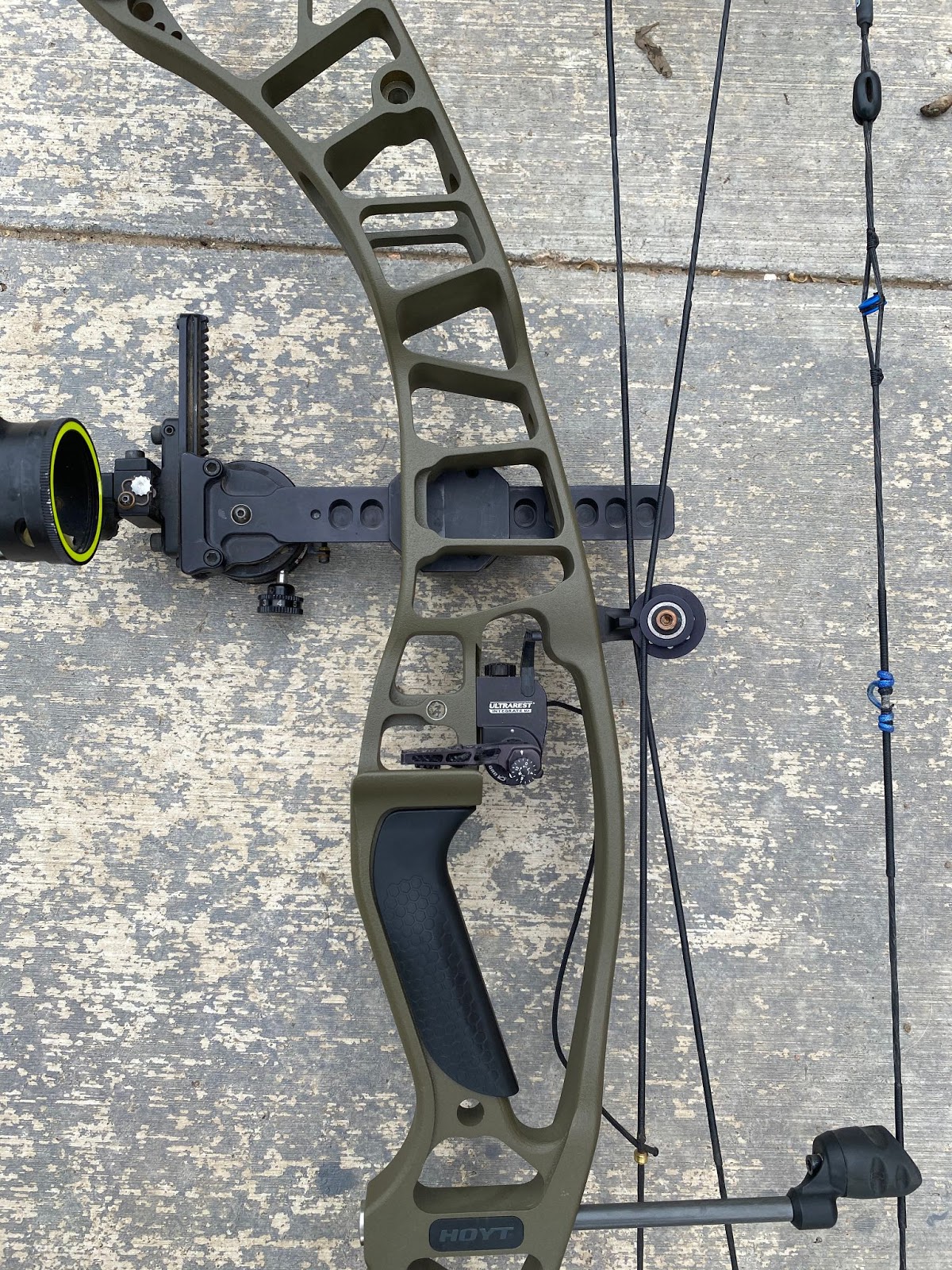
The riser is the bow’s platform. It makes up most of the bow and is the midsection that connects to the bow’s limb pockets. Most risers are aluminum, but many bow manufacturers offer carbon-riser models as well. Carbon-riser compounds are typically more expensive but are lightweight, durable, and warm to the touch when outside temps are frigid (Aluminum risers are more affordable but they feel ice cold to the touch during chilly bow hunting mornings). Manufacturers have gone to great lengths to provide the archer with the perfect blend of strength and weight in riser design, which is a big reason you’ll notice so many cutouts in the riser.
A good riser design adds stability and balance to your shooting. Traditionally, bows with more extended risers are more balanced at full draw, while those with shorter risers are more maneuverable in tight spaces. The riser will come with pre-drilled mounting holes for the sight and rest. Flagship bows from PSE, Mathews and Hoyt now showcase dovetail slits in the riser along with a traditional Berger hole mount to attach face-mounted rests from Quality Archery Designs. The arrow shelf, where the rest launcher arm falls when the arrow is fired, is also part of the riser.
Compound Bow Grip
The bow’s grip will either be a direct-to-riser grip or a pre-made grip that attaches to the riser with screws or glue. Direct-to-riser grips are typically thin, flat-backed, and narrow in the throat, which is the part of the grip that comes up and under the arrow shelf. Many direct-to-riser grips have side plates, but these are for aesthetic purposes more than anything else.
A pre-made grip (even the thin ones) will add bulk. This isn’t necessarily a bad thing, and don’t turn up your nose at a bow that has an attached grip. Bow makers like Hoyt, Mathews, and Bowtech typically showcase some sort of grip attachment, and I’m a fan of all of them. A pre-made grip can create a custom fit and feel that leads to consistent shooting. Stay away from bulky grips with large side flare-outs, these designs will cause you to put inconsistent pressure on the grip while you’re shooting, which will make you less accurate.
Limb Pockets
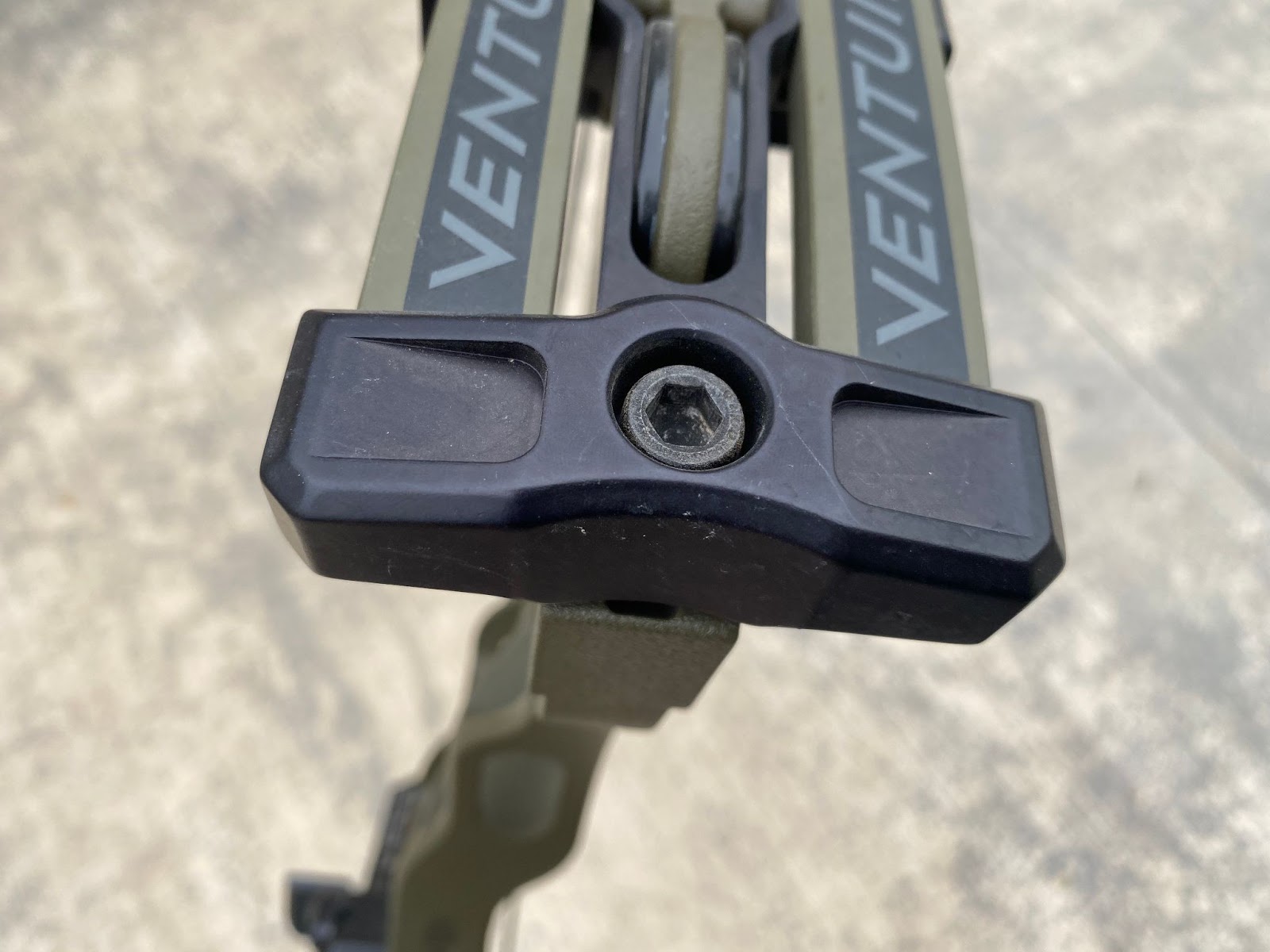
The design of a compound bow’s limb pockets is crucial to its durability and its ability to dampen vibration. Limb screws that sit in the center of the pockets attach the riser, and the screw allows for draw-weight adjustments. Some bows offer more draw-weight adjustments than others, so be sure to read your owner’s manual. A bow will perform its best when set at peak weight, which is with the limb bolts screwed in. Made of aluminum or, in some cases, a high-grade plastic, the limb pockets also hold the bow’s limbs securely in place.
Compound Bow Limbs
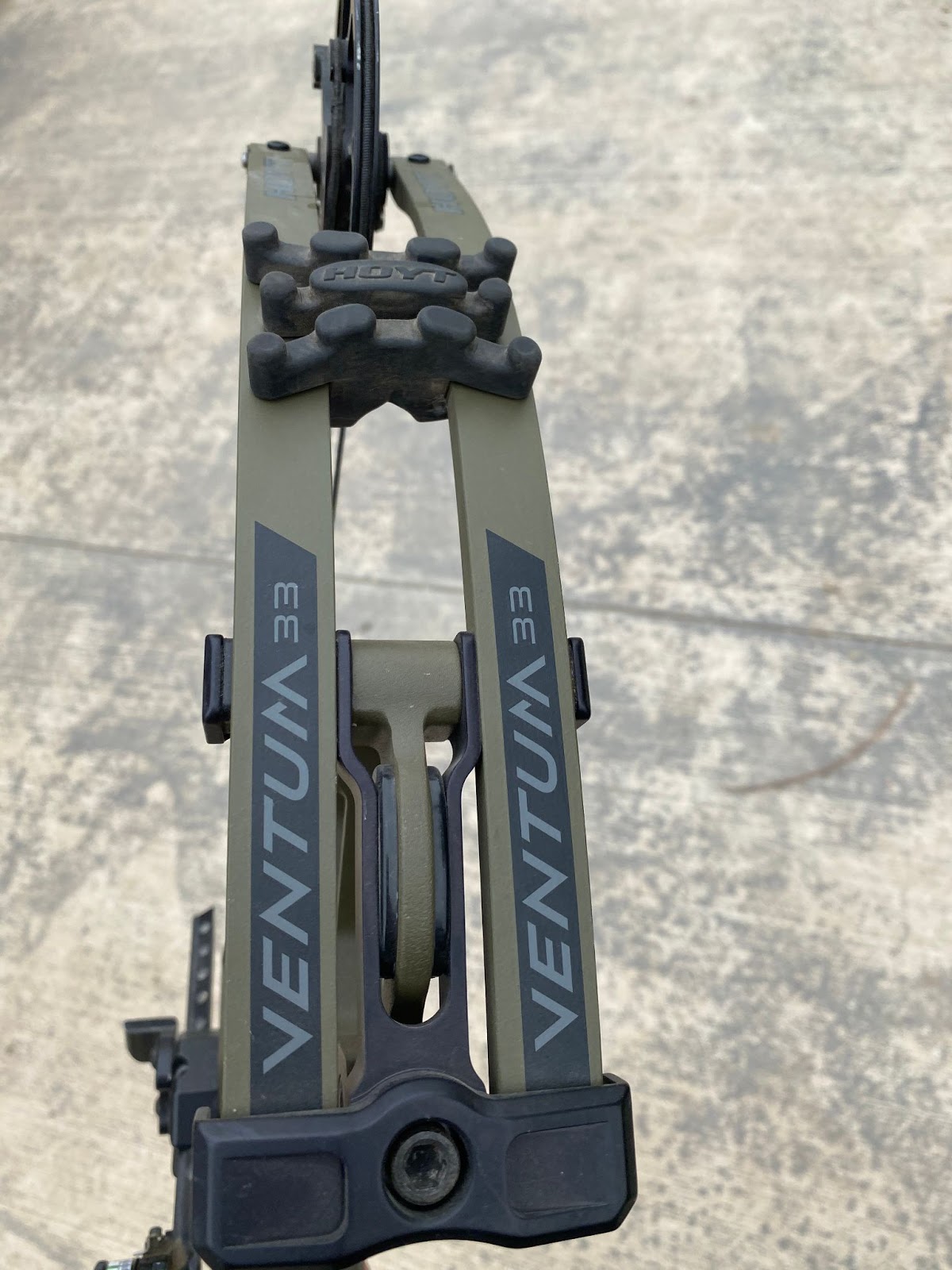
The limbs are among the most important parts of a compound bow. If a catastrophic failure occurs, it’s typically in the limbs. The limbs take a good amount of energy at the shot and are under constant bend and flex. In recent years, manufacturers have beefed up limb designs, and most hunting bows sport limbs with broad split limbs fitted with a rubber dampener placed between them to soak up noise and vibration. While split-limb models are popular, several bow manufacturers offer single, solid limb designs. Most modern-day hunting bows sport a parallel or beyond parallel limb design. This means that the limbs run parallel to each other versus angling in toward the riser. This design allows each limb to pull in the opposite direction at the shot, which cuts down on noise and post-shot vibration.
Parts of a Compound Bow: Cam & Module
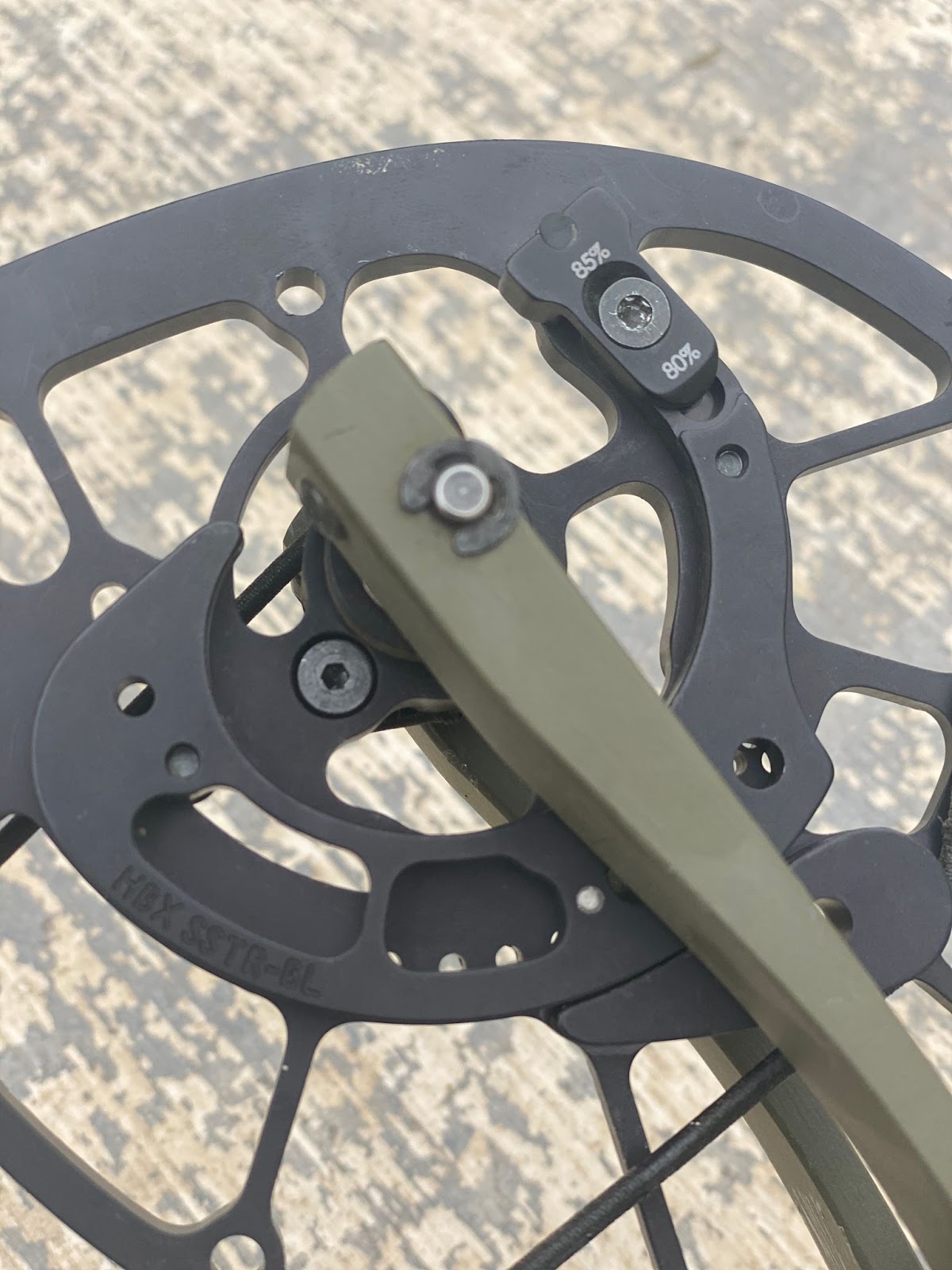
A compound bow’s cams are those wheel-like discs at the end of the limb. The cam system is the bow’s engine. Most bows have a dual-cam design, but single cam bows are not uncommon. Dual cam bows have a top and bottom cam that are exactly the same. Single cam bows typically have a big cam on the bottom and an idler wheel on the top. There are cams designed for speed and cams designed for smoothness and shootability. The cam system dictates how the bow draws and shoots. Generally speaking, a cam with a sharper angled design creates a harsher draw, but comparatively faster arrow. Ask lots of questions about a bow’s cam makeup before you drop any coin on it, and be sure to give the bow a test drive. I will take a cam that promises a smooth draw, isn’t jumpy, and provides solid arrow speed over one that is a pain to draw and shot, but provides super-fast arrow speed.
Cams are also fitted with modules and draw stop pegs. Some draw stops contact the compound bow’s inner cable (a cable stop) while others touch the inside of the limbs (a limb stop). Most bows have a draw stop on each cam, but some have a single peg on the bottom or top cam. The bow’s modules allow the shooter to change draw length. Most modern-day bows are draw-length adjustable in ½-inch increments across a broad range. However, others come with a set draw length and require a complete module change to alter draw length. Modules also, on most bows, allow the shooter to change their letoff. Letoff is the reduction in holding weight at full draw (so a with a 60-pound bow, and 80% let off, you’re holding 12 pounds at full draw). Most states require a letoff rating that doesn’t exceed 80 percent, so keep this in mind.
Axle Pins
There isn’t much to know here, and I wouldn’t mention the axle pins except the measurement between the top pin and the bottom pin makes up the compound bow’s axle-to-axle measurement. It’s essential to know a bow’s axle-to-axle length, which all manufacturers publish, is not the measurement from the top of the top cam to the bottom of the bottom cam. Most of the time, a longer axle-to-axle bow is easier to balance, hold on target, and shoot accurately. However, long axle-to-axle bows can be cumbersome to maneuver in the woods or in a blind.
Compound Bow Strings & Cables
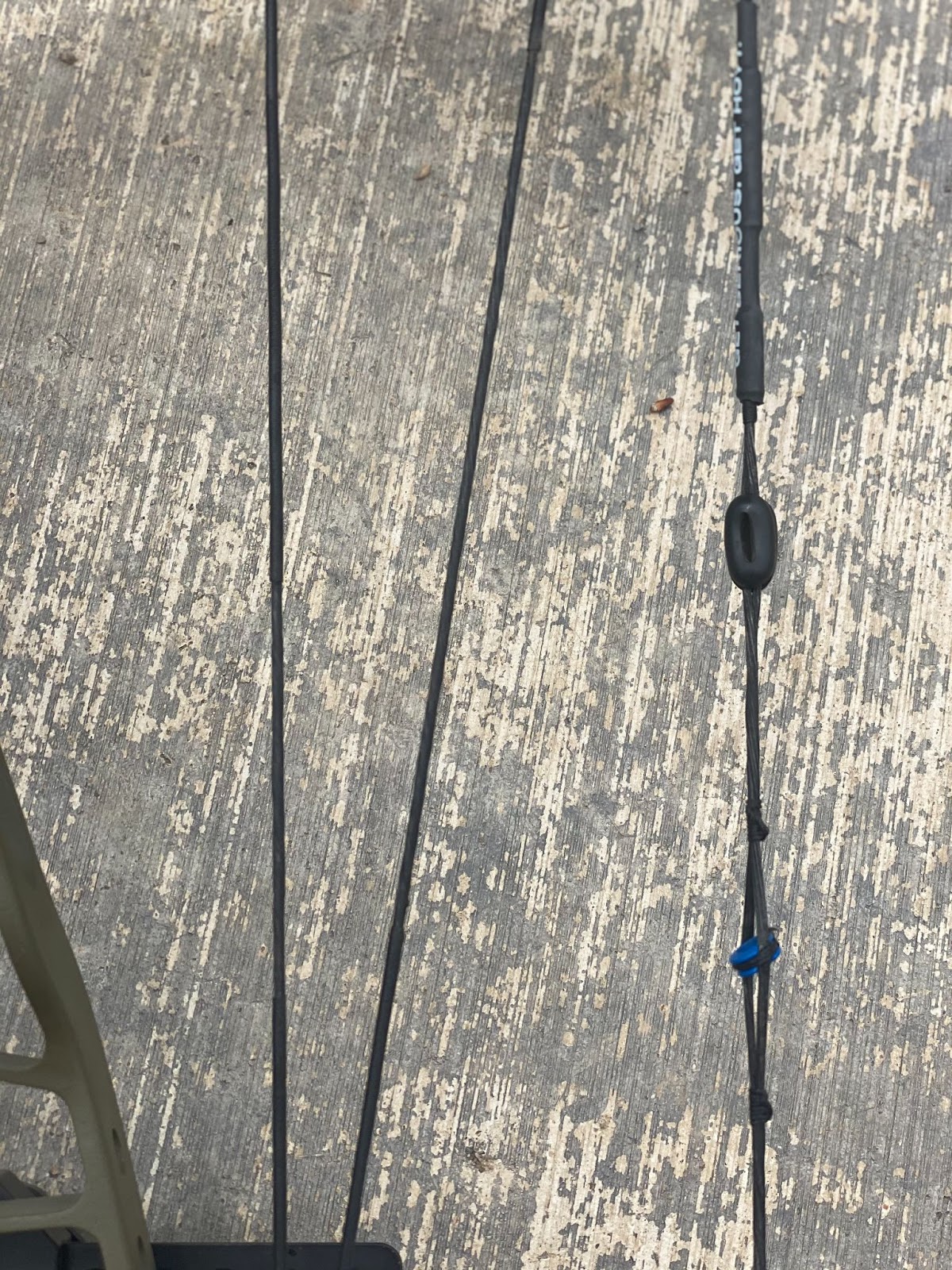
The string or the d-loop that a pro shop ties to your string are what you will hook your release onto to pull the compound bow back. Most dual-cam bows have a string and two cables, while single-cam models have a long string and a single cable. Today’s bowstrings are constructed from excellent material, which boosts their longevity. Some strings will have silencer devices designed to thwart noise and residual oscillation. Many strings will also be fitted with some version of a speed nock. Most will be shrink wrap material with the bow maker’s logo branded on it — speed nocks up a bows feet per second rating.
Roller Guard or Cable Slide
Most flagship bow models feature some type of roller guard that facilitates the movement of the bow’s cables. This device’s job is to pull the cables off to the side in order to make room for the arrow. A roller guard won’t chew up cables as fast as a cable slide, which is basically a piece of plastic with a pair of slits that the cables run through. Another benefit of a roller guard is that it reduces friction, and most have some sort of anti-torque system.
String Stop
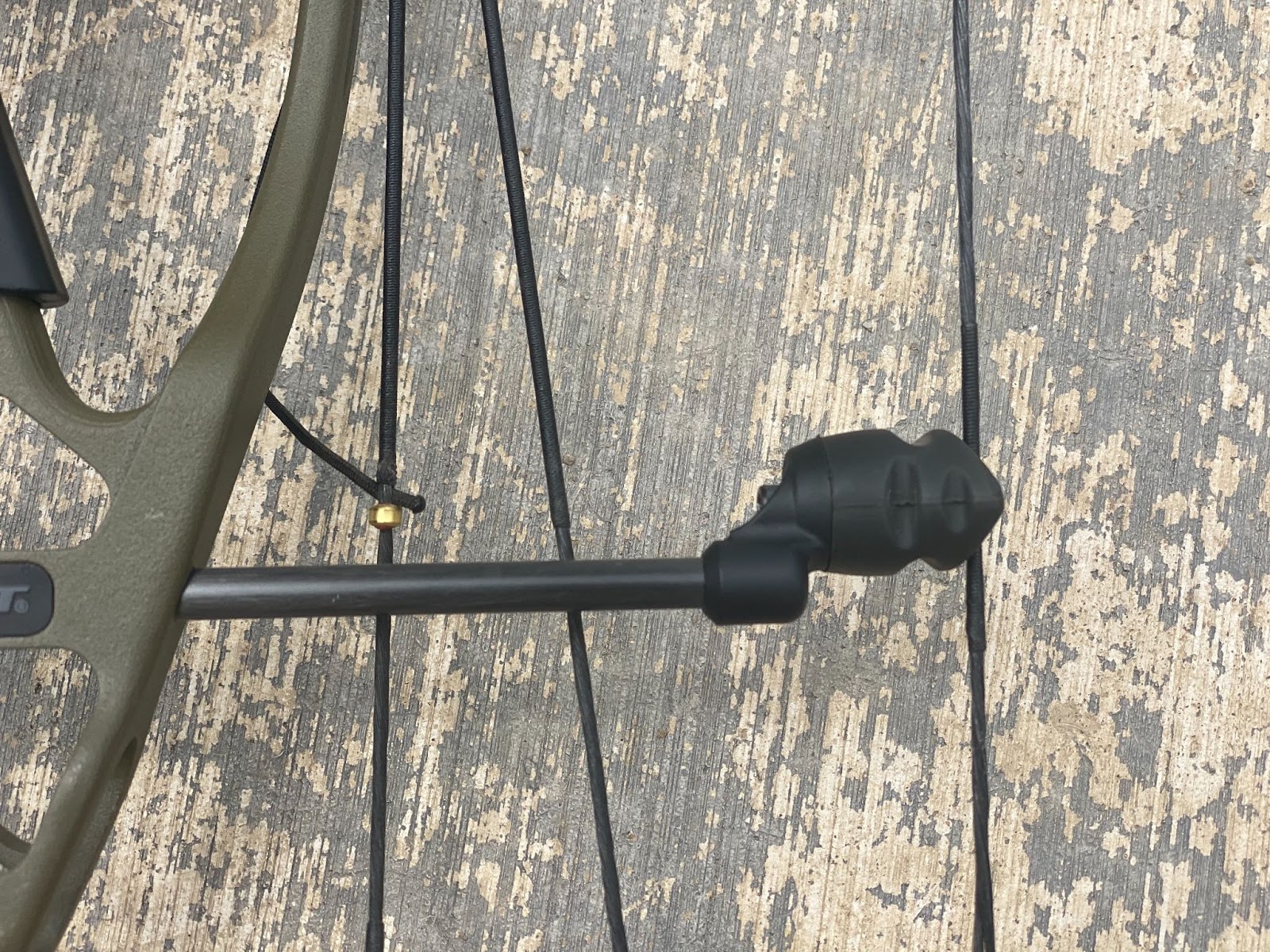
Most string stops extend out of the back of the riser and are made of a carbon rod fitted with a dampening device. Most stops are adjustable. You don’t want the bow’s string pushing hard into the string stop when the bow is at rest. The job of the string stop is to stop the speeding string, which propels the arrow into flight. The string should be resting just off the string stop.
Bow Hunting Accessories: Dampener, Stabilizer, Bow Sight, Peep Sight, Quiver
Once you’ve got the basics of a bare bow covered, there are all kinds of fun compound bow accessories you can dive into. We’ll touch on just a few of the accessories you’ll want on your hunting bow here.
Dampener
Most bows are fitted with some dampening devices. Some are incorporated into the riser while others, as previously mentioned, sit between the limbs. The job of a dampener is to eliminate noise and vibration further. You can also buy these aftermarket and add them to your bow.
Stabilizer
This is the long bar that screws into the front (and sometimes rear) of your riser and adds weight and stability to your bow. Longer stabilizers are more effective, but they can be cumbersome for bow hunting.
Bow Sights
There are all kinds of archery sights you can put on your hunting bow. But the key is understanding that a good bow sight allows you to have a precise aiming point for shooting at a variety of ranges. Find our guide on the best compound bow sights here.
Peep Sight
A peep sight is the little circle you look through to line up your bow sight. The peep gets tied into your string. Work with a bow shop pro to make sure you’ve got the right diameter peep sight and it’s placed in the proper spot on your string.
Quiver
The quiver holds all your arrows and there are almost endless options. Pick one that will hold three to five hunting arrows (with broadheads) and attaches to your compound bow without rattling or vibration. Many hunters shoot with a quiver on their bow, so make sure whichever quiver you pick doesn’t introduce any extra noise or vibration.
